
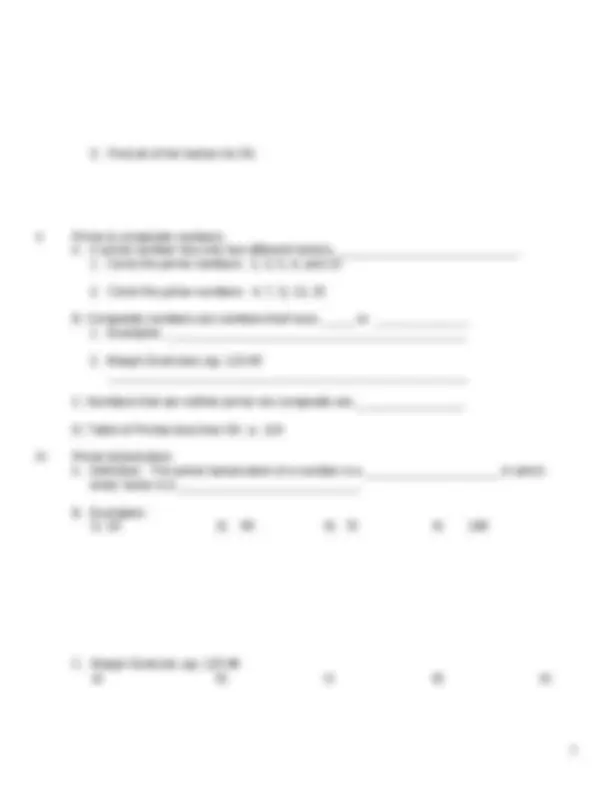
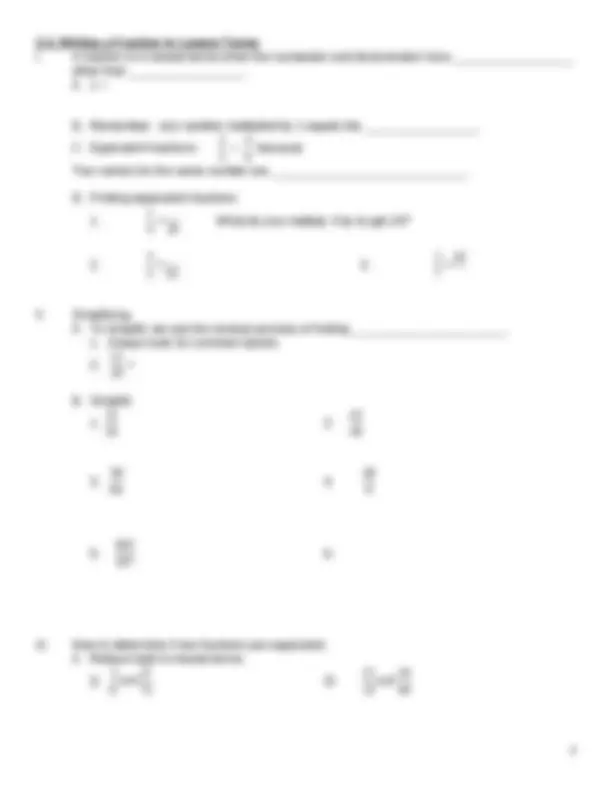
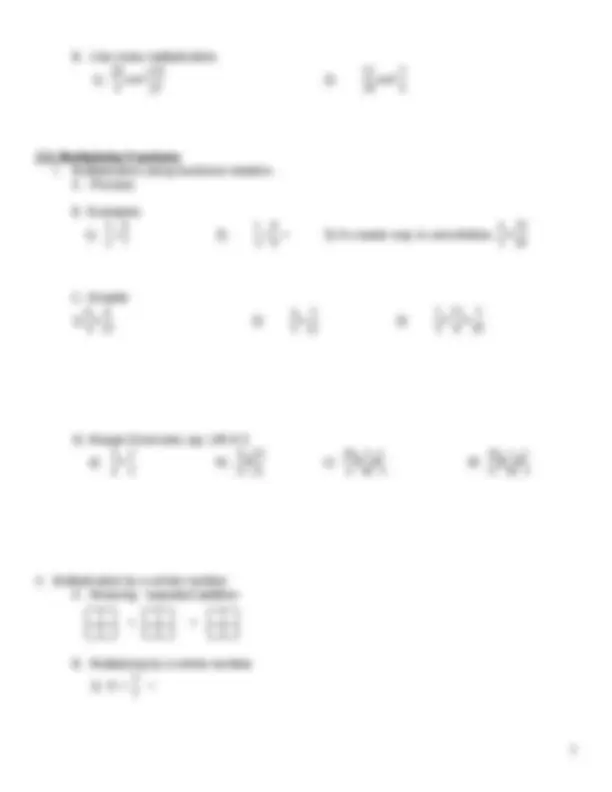
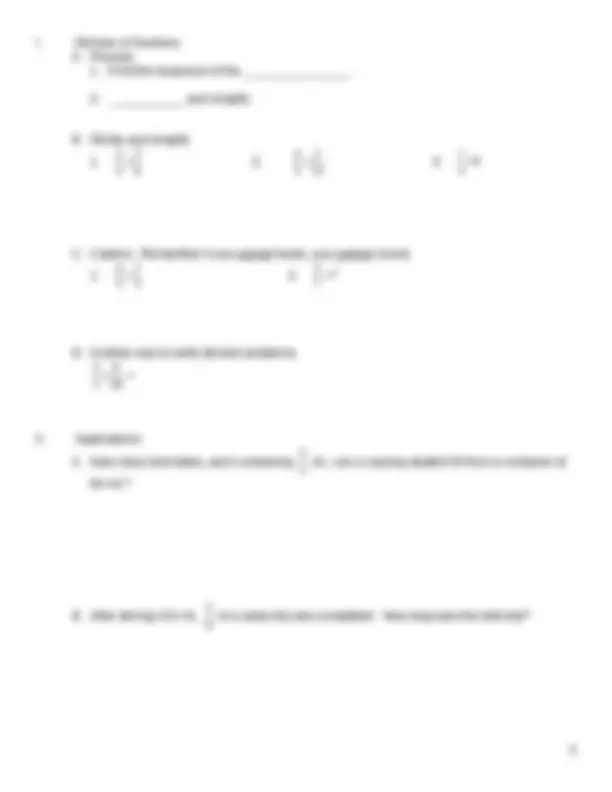
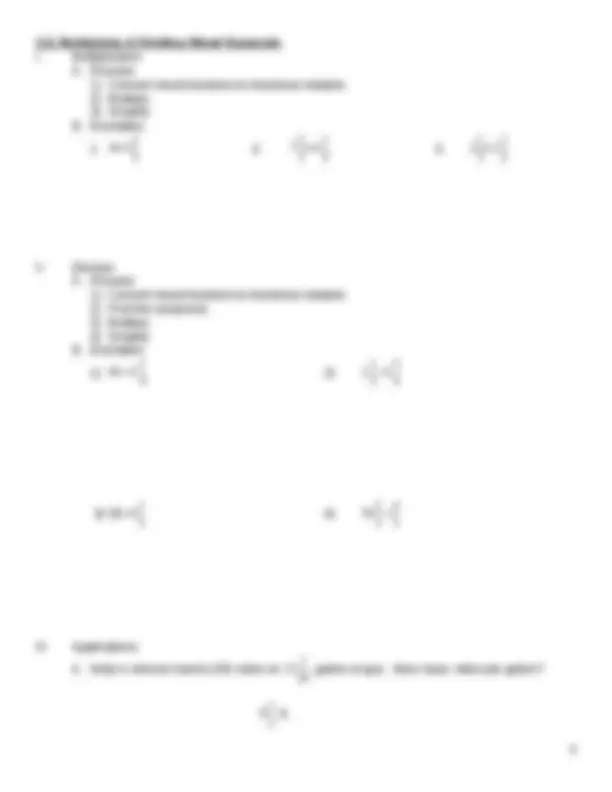
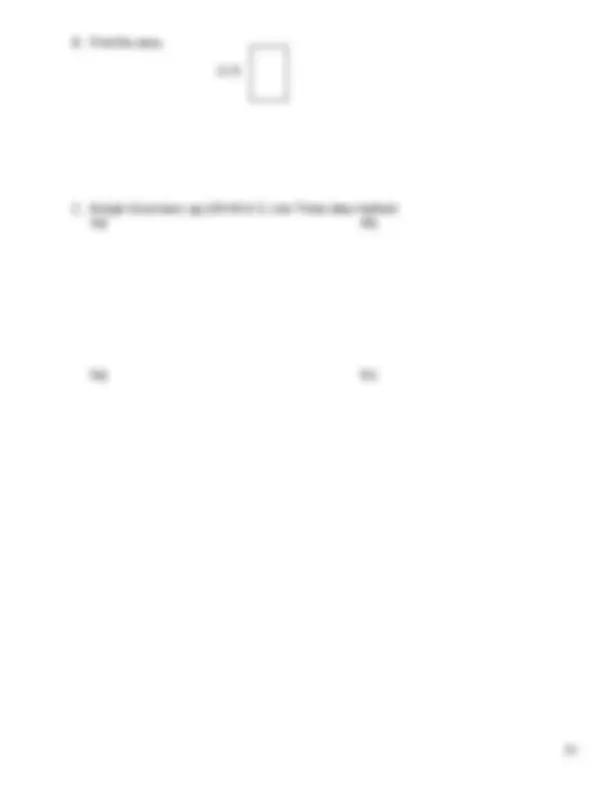


Study with the several resources on Docsity

Earn points by helping other students or get them with a premium plan


Prepare for your exams
Study with the several resources on Docsity

Earn points to download
Earn points by helping other students or get them with a premium plan
Community
Ask the community for help and clear up your study doubts
Discover the best universities in your country according to Docsity users
Free resources
Download our free guides on studying techniques, anxiety management strategies, and thesis advice from Docsity tutors
Material Type: Exam; Professor: Hargrove; Class: Arithmetic Review; Subject: Mathematics; University: Sierra College; Term: Unknown 1989;
Typology: Exams
1 / 10

This page cannot be seen from the preview
Don't miss anything!







2.1, Basics of Fractions
I. Identifying Numerators & Denominators
A. Fractional notation:
B. Numerator & denominator
a
b
II. Writing Fractional Notation
A. What part is shaded? 1. 2.
B. Margin exercises on page 110.
a) a)
b) b)
c)
C. Proper & Improper Fractions
2.2, Mixed Numbers
I. Mixed numerals
II. Converting from an improper fraction to mixed numeral.
A. Process:
B. Examples
C. Margin Exercises pg. 117 #
a) b) c) d)
III. From mixed number to an improper fraction
A. Method
denominator
B. Examples
C. Margin Exercises: pg. 116 #
a) b) c) d)
2.3, Factors
I. Factors & factorizations
A. Numbers multiplied together to get a product are called ______________________.
B. Find all two-number factorizations of each number:
2 2. Find all of the factors for 36.
2.4, Writing a Fraction in Lowest Terms
I. A fraction is in lowest terms when the numerator and denominator have __________________
other than _________________.
B. Remember: any number multiplied by 1 equals the _________________.
C. Equivalent fractions:
because
Two names for the same number are _____________________________.
D. Finding equivalent fractions
What do you multiply 4 by to get 24?
II. Simplifying
A. To simplify we use the reverse process of finding _______________________.
B. Simplify
III. How to determine if two fractions are equivalent.
A. Reduce both to lowest terms.
and
and
B. Use cross multiplication.
and
and
2.5, Multiplying Fractions
I. Multiplication using fractional notation.
A. Process:
B Examples:
C. Simplify
a)
b)
c)
d)
II. Multiplication by a whole number
A. Meaning: repeated addition
B. Multiplying by a whole number.
C. A rancher owns a square mile of land. He gives
of it to his daughter and she gives
of
her share to her son. How much land goes to the son?
D. A recipe calls for
cup of cornmeal. A chef is making
of the recipe. How much
cornmeal should the chef use?
2.7, Dividing Fractions
I. Reciprocals
A. Notice:
B. A reciprocal is the number multiplied by another number in order to obtain the product of
a.
b.
c. 4
C. Does 0 have a reciprocal?
n
n
I. Division of fractions
A. Process
B. Divide and simplify
C. Caution: Remember if you cannot factor, you cannot cancel.
D. Another way to write division problems.
II. Applications
A. How many test tubes, each containing
ml., can a nursing student fill from a container of
60 ml.?
B. After driving 210 mi.,
of a sales trip was completed. How long was the total trip?
B. Find the area.
11 ft.
C. Margin Exercises: pg.169 #4 & 5, Use Three-step method.
4a) 4b)
5a) 5c)